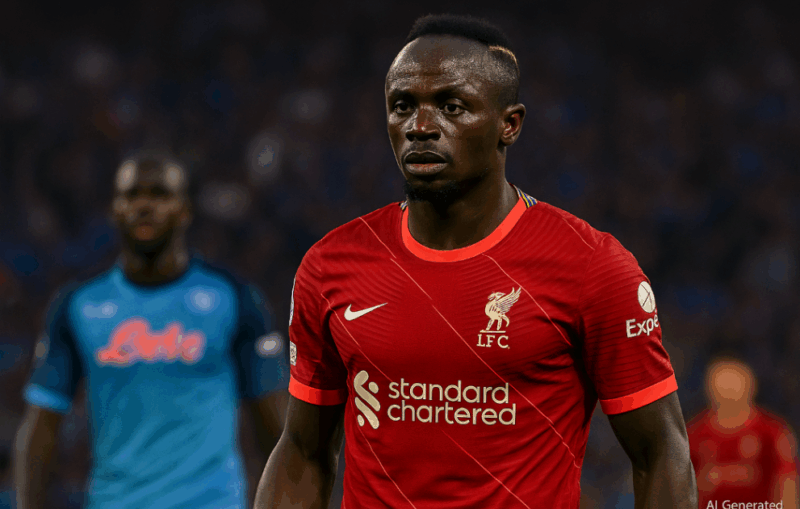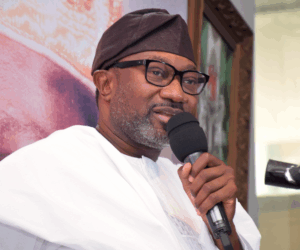It is a match day at the Santiago Bernabéu. With flashing cameras and chants from the stands in Madrid, it is game night. The silence precedes the turn around the corner, and there, looming over the crowd, is a man whose background was in the streets of Douala, Cameroon. It is the story of Cameron, the goalkeeper who turned into a millionaire, Andre Onana, who represents the life path of the illustrious African football players that are currently taking over the European top football, not only as stars on the field, but in terms of monetary satisfaction.
In the past ten years, the African players shifted their position on the sidelines to the limelight and demanded fat transfer fees, publicity as well as, most importantly, a stunning compounding remuneration. The amount they can earn in Europe has become a major area of concern to the agents and clubs, as well as the financial analysts. So, on which side makes the most money and why?
How Talent Becomes Wealth in African Football
The times of African signings under the radar are past. Clubs now aim to have data-broadcasting scouting networks, by targeting the markets of Senegal, Nigeria, Ghana, and Ivory Coast, not only in terms of technical quality but also brand strength and market outreach.
Midfield generals like Thomas Partey, electrifying wingers like Mohamed Salah, and rising powerhouses like Victor Osimhen are not just players — they’re assets. And in a sport increasingly ruled by capital, their salaries often reflect more than just what’s on the pitch.
Also, in this regard, off-field platforms also result in fan involvement. For instance, many users turn to sports betting tools to track their performance, particularly those who download the Melbet application to keep real-time tabs on odds that shift around African stars’ availability or form. The change of betting trends in Nigeria and Italy towards Osimhen flipped when he limped off injured last month against Bologna.
Understanding the Earning Hierarchy Without the Goal Obsession
Raw footballing talent presents an entry into the club, but it is not the only criterion that determines what African players would carry home. A combination of tactical value, off-field appeal, and business logic creates a salary ecosystem that’s anything but simple.
High salaries aren’t just about skill. They hinge on a cocktail of variables:
- Marketability: Not only is Mohamed Salah a legend of Liverpool FC, but he is also starring in numerous advertisements on the European and Middle Eastern continents.
- Positional Demand: Elite center-forwards and goalkeepers from Africa command higher wages due to scarcity.
- Transfer fees and agent influence: The costs of acquisition tend to be high, so salaries have to be high to repay the outlay.
- Economics: Players of the Premier League are better paid, as a rule, than the equivalent salary in Ligue 1 or Serie A.
- Club Financial Models: The cost of doing business at PSG or Manchester United can be higher because of the commercial agreements and a worldwide presence.
This complex matrix results in a pecking order, with a few players towering above the rest.
Ranking the Highest-Paid African Players in Europe
To draw a better portrait, let us see a little by little who the five best-paid African players in Europe are. These figures indicate gross annual incomes without endorsements and bonuses.
Tax rates in French and Spanish can be a brutal cut in salaries. Top-quality African players, in turn, are frequently attracted to England, the overall terms of which are mostly more comfortable.
Salary vs Influence: Why Not All Big Earners Are Big Performers
In the tense matches of AFCON and the UEFA Champions League, numerous fans focused on such stars of African origin as André Onana and Samuel Chukwueze. Amid all this increased interest, websites like MelBet APK became more popular than ever, and it is a testament to the level of entanglement between digital technology and the use of live sports data. However, as much as salary may appear as the final yardstick of success, it does not necessarily translate into pitch performance.
Take Wilfried Zaha’s former £130,000/week deal at Crystal Palace—a sum that eclipses many bigger names in Europe. It was partly a retention tactic. Palace couldn’t risk losing their talisman and were willing to pay to keep him grounded in South London.
In the meantime, a player like Yves Bissouma, who has risen to the celestial at Brighton and is currently at Spurs, continues to earn a lot less. His profile is rising, but the position he plays—central midfield anchor—just isn’t valued at the same pay tier unless it’s at the elite clubs.
Inside Osimhen’s 2025 Contract Negotiation Drama
Victor Osimhen’s contract talks with Napoli are quickly turning into one of the biggest stories of the summer transfer window. Heading into July 2025, the Nigerian striker wants his pay bumped to nearly €12 million a year, a demand he links directly to his 26-goal season and rising value.
Club president Aurelio De Laurentiis, famous for sticking to salary limits, is still weighing the request. Meanwhile, Chelsea and Paris Saint-Germain watch closely, and Osimhen’s agents use performance stats, jersey sales, and booming traffic from Sub-Saharan Africa to show that he deserves every euro.
Welcome to modern football, where goals, tweets, and global fan reach can shape a player’s salary as much as the final score.
The Defensive Giants Who Quietly Earn Big
Not all well-paid African players are forwards or wingers. Some defenders and goalkeepers command huge salaries due to their reliability and leadership.
Examples of defensive players who earn big:
- Kalidou Koulibaly – Former Napoli captain, once on €8M/year at Chelsea.
- Achraf Hakimi – Moroccan fullback earning €7.5M/year at PSG.
- André Onana – Manchester United’s No. 1, reportedly earning €6.2M/year.
These figures might pale in comparison to Premier League attackers, but in Serie A or Ligue 1, they are top-tier. A solid center-back or shot-stopper can make the difference in Europe, and their salaries reflect the high cost of errors in modern systems.
Cultural and Commercial Edge of African Stars
Sporting clubs have started to realize just how big the African market really is. Signing a star from Nigeria, Egypt, or any other country on the continent can skyrocket TV ratings, boost jersey sales, and even fill up stadiums when the team travels.
Take Olympique Marseille as an example. Once they brought in Pierre-Emerick Aubameyang, their social media numbers from Gabon shot up overnight. Leicester City saw something similar after snapping up Nigerian teammates Kelechi Iheanacho and Wilfred Ndidi; their online following grew right along with fan excitement.
Such cultural pull lets some African stars push for better pay and perks, even when their personal numbers aren’t quite as high as those of players born in Europe.
Top 3 African players by social media reach (as of June 2025):
- Mohamed Salah – 56M followers (Instagram + Twitter)
- Sadio Mané – 33M followers
- Achraf Hakimi – 29M followers
These numbers play a subtle but significant role in sponsorship deals and club brand growth strategies. Football is business. Influence matters.
Emerging African Stars Climbing the Salary Ladder
Across Europe’s biggest clubs, attention is shifting toward young African talent. These players are no longer squad fillers; they are match winners and financial magnets. Senegalese midfielder Lamine Camara, for example, turned down a generous €4.5 million-per-year deal from AS Monaco in favor of a steadier plan at Metz. His camp insists interest from the Bundesliga is picking up speed.
In Belgium, Moroccan star Bilal El Khannouss is catching eyes at Genk. His consistent displays in the Europa Conference League have brought formal inquiries from Brighton and Aston Villa, with wages projected near €3.5 million per season. That figure would set a new record for Moroccan teens outside Europe’s top five leagues.
Nigerian striker Gift Orban is making headlines in Austria with RB Salzburg. He has scored 19 goals during just 22 outings, and that form has drawn Premier League scouts, with salary estimates around €5 million a year. Clubs as varied as Brentford and Everton are watching closely.
More important than rising numbers, these youngsters now carry real bargaining power. They walk into negotiations armed with stats, global visibility, and fast-growing fan bases. The business of African football is shifting, and its fresh wave is already redrawing Europe’s pay landscape.
Click to signup for FREE news updates, latest information and hottest gists everyday
Advertise on NigerianEye.com to reach thousands of our daily users









